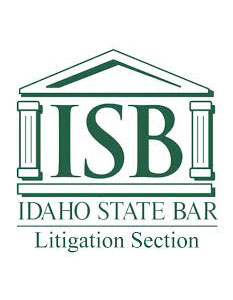When people think of bicycle accidents, they often focus on the immediate impacts, such as injuries and damage to the bike. But resolving a bicycle accident claim can be a longer process that involves many steps. Mediation is a key part of resolving disputes in a calm and fair way. This process allows both sides to understand each other’s views and work together to reach a settlement, often without going to court. Through mediation, people can avoid the stress and costs of a long courtroom battle. Knowing how mediation works can help you feel more confident and prepared if you’re ever in a bicycle accident. At, Hepworth Holzer, LLP, we are here to guide you through the legal process and help you navigate the complexities of your case.
What is Mediation in Bicycle Accident Claims?
Mediation is a process where a neutral third party, known as a mediator, helps both sides talk about their dispute and try to reach an agreement. In bicycle accident claims, this involves the injured person, the party at fault, their insurance companies, and sometimes attorneys. The mediator does not take sides and does not decide the outcome. Instead, the mediator helps guide the discussion to make sure each side understands the other’s viewpoint. In many cases, mediation can lead to a fair settlement that satisfies both sides.
The goal of mediation is not to assign blame or to find who is “right” or “wrong” in the accident. Instead, it focuses on understanding the situation, discussing the injuries and damages, and working together to find a solution. This approach is often faster and less expensive than a traditional courtroom setting. Through mediation, people can have open conversations about their needs, allowing them to address issues that might not come up in a more formal legal process.
Preparing for Mediation in a Bicycle Accident Claim
Before going into mediation, it’s essential to gather all the necessary information and documents that explain what happened and the resulting damages. This preparation helps both parties clearly understand the accident and the injuries or losses that followed. This information may include medical records, repair estimates for damaged property, police reports, and witness statements.
During this preparation stage, it’s also helpful to think about what you hope to achieve from mediation. Knowing your desired outcome can guide you during discussions and help you stay focused. Many people enter mediation hoping for fair compensation to cover medical bills, lost wages, and any pain and suffering caused by the accident. Having a clear picture of what you need can make it easier to communicate your needs during mediation.
The Role of the Mediator
A mediator plays a unique role in the mediation process. They do not act as a judge or decide who is right. Instead, they work to keep the discussions fair and focused on finding a solution. The mediator’s job is to create an environment where both sides feel comfortable sharing their concerns and ideas.
In bicycle accident claims, the mediator encourages open communication between both sides. The mediator may ask questions to clarify details and ensure everyone understands the facts. This neutral guidance can prevent heated arguments and keep the conversation productive. If discussions stall, the mediator may suggest alternative solutions to help both parties consider other options. This approach allows each side to think about the bigger picture and consider solutions that might work for everyone involved.
The Mediation Session
When mediation starts, the mediator will usually begin by explaining the rules and the purpose of the session. Each side is then given time to share their perspective. For bicycle accident claims, this often means that the injured cyclist and the other party, which could be a driver or property owner, will explain their side of the story. They might talk about how the accident happened, the injuries sustained, and any financial impacts resulting from the incident.
After both sides have presented their views, the mediator may ask questions or encourage further discussion. The mediator might also speak with each side separately. These private conversations can help each party discuss their concerns more openly. By offering this private time, the mediator can address any fears or worries without disrupting the mediation process. This can lead to a better understanding and often makes reaching a settlement easier.
In many cases, both parties might go back and forth a few times, discussing different options and working toward a resolution. This process requires patience, as it may take time to explore all possible solutions. However, this open and guided dialogue allows both sides to consider alternatives they might not have thought about otherwise.
Benefits of Mediation Over a Courtroom Trial
Choosing mediation instead of a courtroom trial offers several benefits. One main advantage is that mediation tends to be quicker and less costly than going through the court system. Trials can last for months or even years, whereas mediation usually wraps up in a much shorter time. This shorter time frame often means less stress and fewer expenses for everyone involved.
Another benefit of mediation is privacy. Court trials are often public, which means details about the accident and personal information may become part of public records. In contrast, mediation is private. This privacy can be comforting, especially if the details of the accident are sensitive. Keeping matters private can also encourage both sides to speak more freely, leading to a better resolution.
Through mediation, both sides have more control over the outcome than they would in court, where a judge or jury would make the final decision. Mediation allows the injured cyclist and the other party to craft a solution that meets their unique needs. This control can lead to more satisfactory outcomes for both sides, reducing the chances of ongoing resentment or further disputes.
Rules of a Personal Injury Claim Choosing a Personal Injury AttorneyRelated Videos
Factors That Affect the Outcome of Mediation
The outcome of mediation in a bicycle accident claim can be influenced by several factors. One of the biggest factors is the willingness of both parties to negotiate and find a middle ground. If both sides enter the mediation with an open mind and a willingness to listen, they are more likely to reach a fair and agreeable outcome.
Another factor is the strength of the evidence provided. The more detailed and clear the evidence, the easier it is for both parties to understand the impact of the accident. Medical records, witness statements, and photographs of the accident scene can all play a role in strengthening a claim. Clear evidence helps reduce doubts and misunderstandings, allowing both sides to focus on finding a solution.
Finally, the skills and experience of the mediator can make a difference. A good mediator knows how to guide discussions and help both parties see each other’s viewpoints. This skill can be vital in keeping the mediation session productive and focused on finding a resolution that works for everyone.
Reaching a Settlement
If both parties are able to reach an agreement during mediation, the mediator will help put the agreement in writing. This written agreement outlines the terms of the settlement, including any financial compensation and any other actions both parties agree to take. Once both sides sign this agreement, it becomes a binding contract.
Verdicts & Settlements
If the mediation does not result in a settlement, both parties are still free to pursue other legal options, including going to court. However, many people find that even if mediation does not lead to an immediate settlement, it helps clarify the issues and brings both sides closer to a resolution. Sometimes, after mediation, both parties continue negotiations on their own and eventually reach an agreement without further legal steps.
How Mediation Fits Into the Legal Process
Mediation is often part of the larger legal process for bicycle accident claims. Some claims are settled directly with insurance companies, while others may require more formal legal actions. Mediation can occur at different points in the process. In some cases, it is the first step before considering other legal actions, while in others, it may be used after a lawsuit has been filed but before it goes to trial.
The mediation process can also work alongside other forms of dispute resolution, like arbitration or informal settlement discussions. By fitting into the legal process at various stages, mediation provides a flexible option that can help resolve disputes quickly and fairly. Even if mediation does not immediately resolve the claim, it can lay the groundwork for a positive outcome by helping both sides understand each other’s concerns and goals.
Mediation is a valuable tool in bicycle accident claims, offering a way to resolve disputes without the stress and cost of a full trial. Understanding the mediation process can help you feel more prepared and confident in finding a fair outcome. For anyone involved in a bicycle accident, mediation can be a helpful path toward recovery and resolution.
If you or someone you know has been in a bicycle accident and is considering mediation, reaching out to experienced attorneys can provide guidance and support through each step of the process. Hepworth Holzer, LLP is here to help you understand your options and navigate the mediation process to pursue a fair settlement that meets your needs. Contact us today to learn more about how we can support you in resolving your bicycle accident claim.











